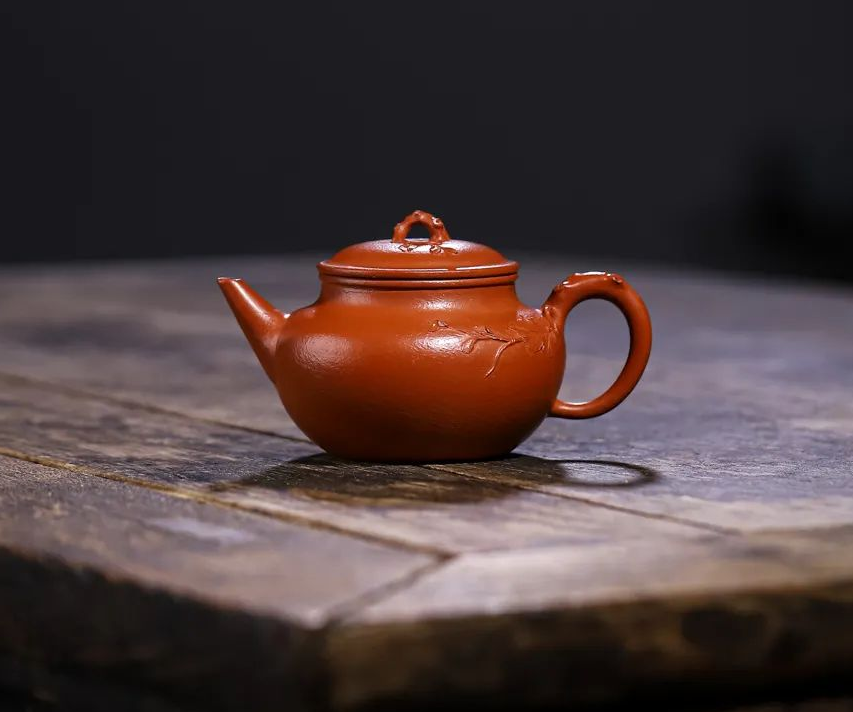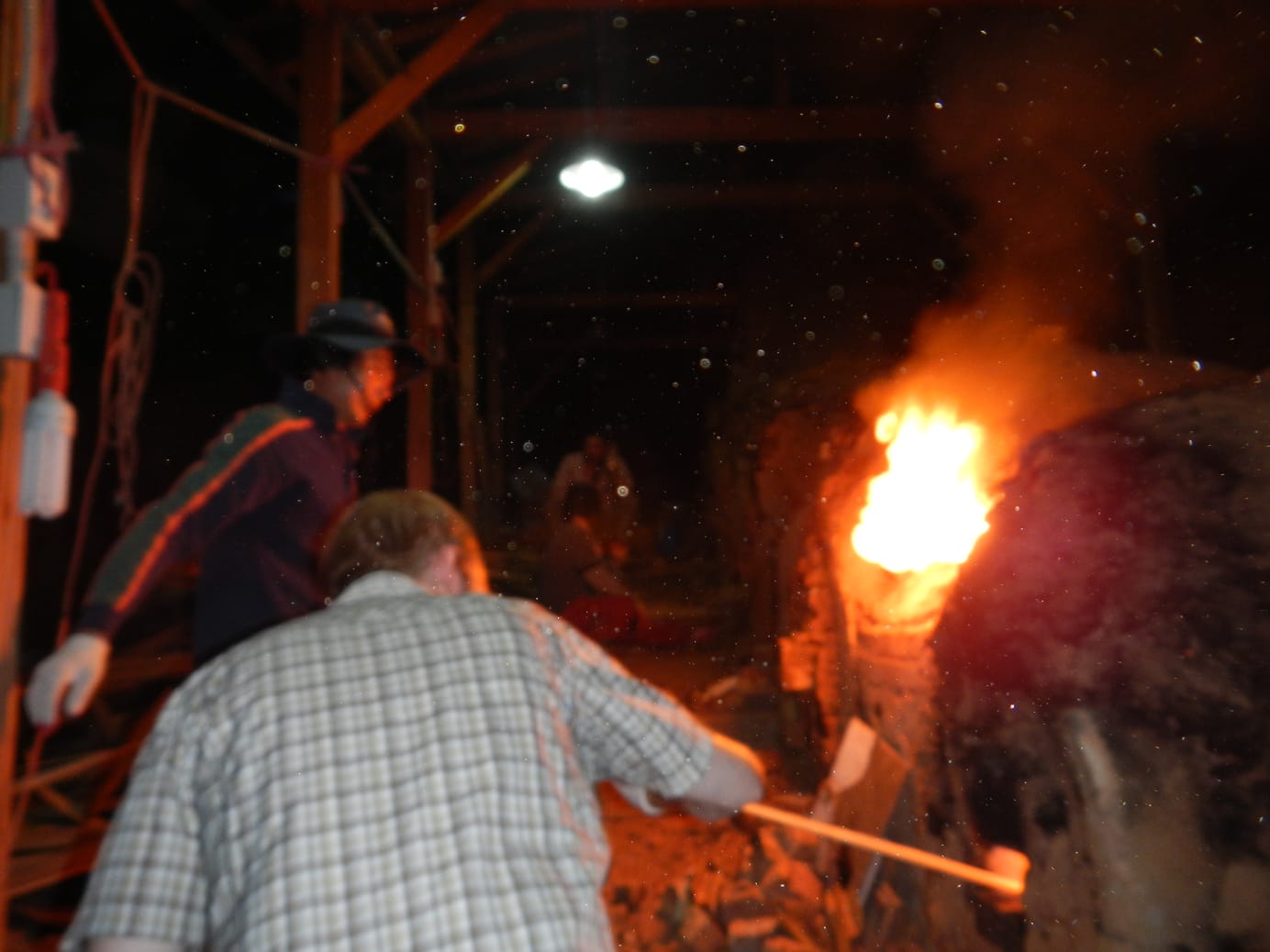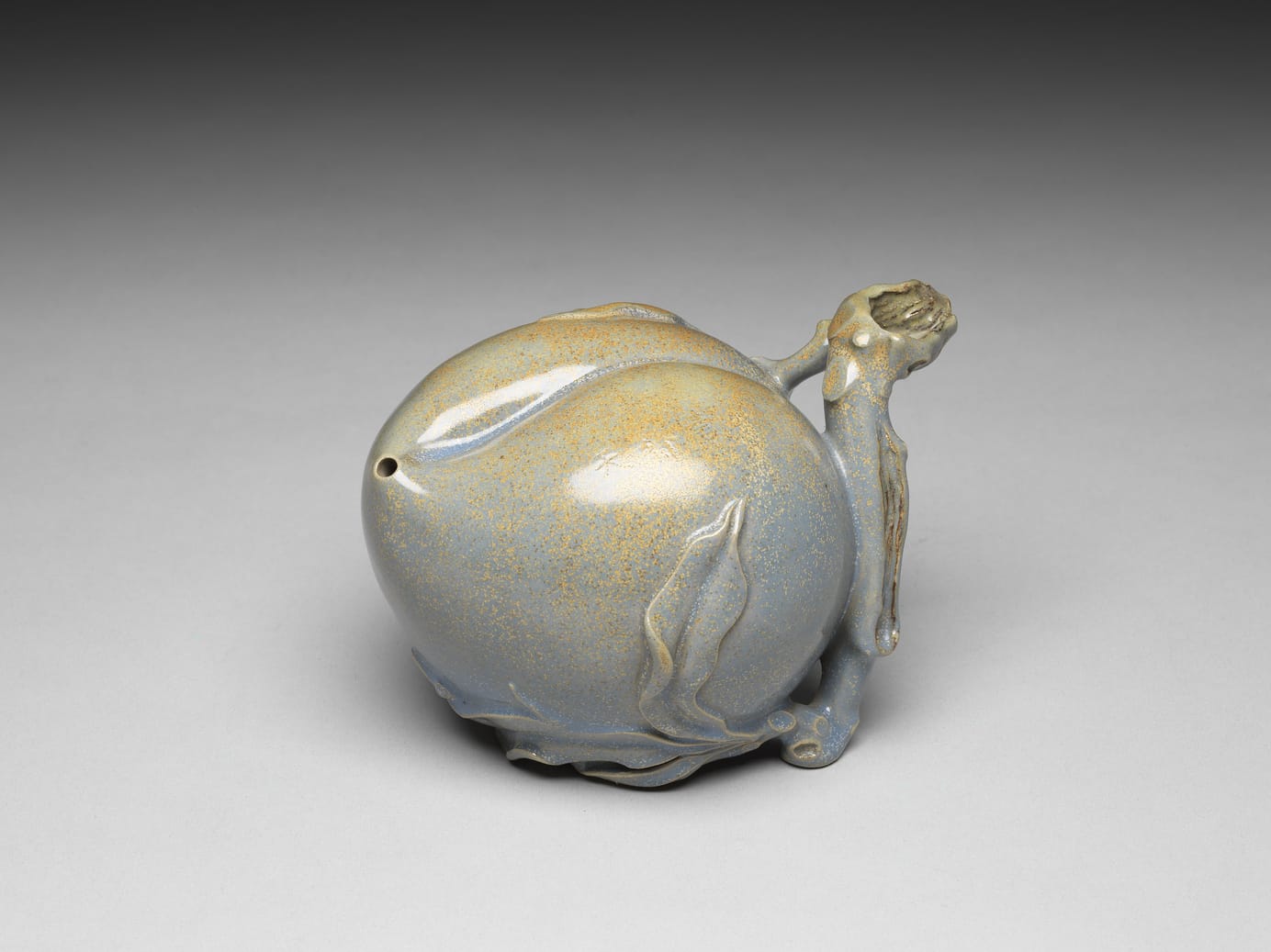
Editorial Conversation: Chapter 8, Section 6: Xiaohongni Ore and Clay
The episode is also available on YouTube and Spotify.
A full transcript is included on the episode page and below:
[00:00:06] Jason Cohen: Hello, everyone. I'm Jason Cohen, the author of An Introduction to the Art and Science Chinese Tea Ceremony. Today, we're discussing Book Two, Chapter Eight, Section Six, Xiaohongni (小红泥) Ore and Clay. Here to talk about this chapter is our editorial team, Patrick Penny.
[00:00:20] Pat Penny: Hey, hey!
[00:00:21] Jason Cohen: Zongjun Li.
[00:00:23] Zongjun Li: Hello. Hello.
[00:00:24] Jason Cohen: And Emily Huang.
[00:00:26] Emily Huang: Hello.
[00:00:28] Jason Cohen: Hello, everyone. This is a short and perhaps surprising chapter. We've just spoken and published the chapter on Hongni (红泥) Ore and Clay, which many people know and love.
Why wasn't xiaohongni (小红泥) a subsection within that chapter? Why is xiao (小), little, hongni (红泥) worthy of its own chapter?
[00:00:49] Zongjun Li: Well, xiaohongni (小红泥) is essentially a totally different clay despite the name shares some similarities to hongni (红泥). For example, xiaohongni (小红泥) originally is a wetter form of nenni (嫩泥) instead of baini (白泥), which is the original material for hongni (红泥) and also the harvest region is different too where most of the xiaohongni (小红泥) are harvesting in Fudong (洑东) area which is actually pretty far away from most of the hongni (红泥) are harvested.
[00:01:17] Jason Cohen: Xiaohongni (小红泥) is not the opposite of da hongni (大红泥). It's something totally different.
[00:01:23] Zongjun Li: Totally different.
[00:01:25] Jason Cohen: Why was xiaohongni (小红泥) named xiaohongni (小红泥)? Was it purposely to aid in causing confusion, or is there a good argument for the name?
[00:01:33] Zongjun Li: When xiaohongni (小红泥) was first harvested and used, a lot of people used it as a kind of a substitute, or imitation of hongni (红泥). It gets sometimes even sold under the name of hongni (红泥)despite being xiaohongni (小红泥) in nature. It was also used as a coating material sometimes for zini (紫泥)wares, which people will call it neizi waihong (内紫外红). So, xiaohongni (小红泥) was coated outside of a usually a zini (紫泥)teapot as a kind of like a huazhuang tu (化妆土) a makeup clay, to decorate that for aesthetic purpose, but definitely there's a intention buried in the naming of xiaohongni (小红泥) that people wanted to remind people that this is either related to hongni (红泥), or it's a form of hongni (红泥), but in fact, it's not.
[00:02:18] Pat Penny: And I wonder how much of that has to do with the firing color versus just as the shortage of hongni (红泥)started to happen in the 70s people were looking for a substitute other consumers might not feel is inferior immediately. And so you say, well, this is, this is xiaohongni (小红泥), it's basically like hongni (红泥), just a little different.
So I wonder how much, how much marketing kind of plays into that as well.
[00:02:42] Jason Cohen: Is this a sought after ore or clay? Is this a material you'd like to feature in your teapot collection?
[00:02:49] Pat Penny: I'm going to guess no, because I literally never heard of it until this chapter was written. So it's not like as if I've been scrolling around on the internet and see people posting about or glorifying xiaohongni (小红泥) teapots.
[00:03:02] Zongjun Li: Xiaohongni (小红泥) is not really good as a clay to firing on its own until modern technology nowadays. It's too soft and the shapeability is not very good. The, the deformation rate is also very high.
And also a lot of other additives or adding of hongni (红泥)or other materials with stronger structural integrity. So that it can be fired into the pot shape.
[00:03:28] Pat Penny: I think I do own one potentially xiaohongni (小红泥) containing pot though. Cause I do have a neizi waihong (内紫外红), so I might have one in my collection.
[00:03:38] Jason Cohen: I was going to play devil's advocate here for a moment. I was going to circle back to the neizi waihong (内紫外红). So the neizi waihongs (内紫外红) were slip coated in a mix of xiaohongni (小红泥) clay, and they seem to be particularly sought after. So what can explain that discrepancy where we say, well, xiaohongni (小红泥) is not a, not a desirable ore, and yet here we have the neizi waihongs (内紫外红) that are considered to be desirable teapots.
Is this just because of the F1 fanboy club or are these actually great teapots? Is xiaohongni (小红泥) secretly great clay that's, that's been overlooked?
[00:04:09] Pat Penny: Well, just my opinion, but the neizi waihong (内紫外红), the whole thing is that it's zini (紫泥) on the inside, right? And so the clay that's actually interacting with the tea is zini (紫泥). The hongni (红泥) on the outside is just your xiaohongni (小红泥). Potentially it's just your nice, beautiful visual effect.
And I think people really like these pots because they take on quite a lot of color, right? From what I remember. So I think they form patinas quite quickly. The positive tea interactions are really zini (紫泥) based, not xiaohongni (小红泥) based. I don't think people recognize that a lot of these pots are xiaohongni (小红泥).
They just see waihong (外红) and they assume it's hongni (红泥). Wonder what your guys thoughts are about that.
[00:04:46] Zongjun Li: Yeah. Being a very typical F1 factory results definitely plays a role into people chasing after this specific type of teapot. And also there's definitely some firing mastery required to produce such a teapot because there is a temperature discrepancy between zini (紫泥) and xiaohongni (小红泥), so in order to fire such teapot, you really have to control the temperature in the right range so that there's no crackage in both clay.
[00:05:17] Jason Cohen: I'm going to stay on this devil's advocate kick for one more question. Xiaohongni (小红泥) is also blended with modern zhuni (朱泥). Frequently, commonly blended with modern zhuni (朱泥).
And so if someone is looking for a good modern zhuni (朱泥) teapot, is a blend with xiaohongni (小红泥) good or bad for the material properties of the ware and its pairing with tea? Should they be specifically looking to avoid that? Is there a better blending material? Or is xiaohongni (小红泥) a good choice for a contemporary ware?
[00:05:46] Emily Huang: It's not necessarily that the blend is wrong. You can still do a really good blend, combined with a good firing, a good master, a good shape.
So I don't think it's something that I would necessarily avoid, but I would definitely be more careful. Because I don't have the scientific equipment to dissect the specific contents of the clay.
[00:06:11] Pat Penny: Yeah, definitely agree.
There's definitely not a binary yes or no here. First of all, no teapot maker or vendor is going to tell you yeah, this is actually blended with some xiaohongni (小红泥). So just in case you were thinking of not buying it, keep that in mind. But I think it really all comes down to the normal tests that we would do, right?
If you're going to buy a teapot, you want to probably try and use it first. If it performs up to what you expect a zhuni (朱泥) teapot to perform like, whatever that means for you then it's probably not an issue that it's blended with some xiaohongni (小红泥) or whatever it's blended with. You probably really won't know.
But I would say you, you want to be testing the pot and it should meet your expectations. It should improve the qualities of some teas in line with what you personally think zhuni (朱泥) is usually doing to your tea. If you see that it's doing something totally different, then maybe there's some weird stuff in there.
[00:07:02] Zongjun Li: There's also a difference between da hongni (大红泥) blended with zhuni (朱泥) and zhuni (朱泥) blended with xiaohongni (小红泥). The proportion is very important. By the end of the day xiaohongni (小红泥) is also a natural material, right? It's just like shihuang (石黄) and shihong (石红) when you blend it with clay. After firing, it's usually safe to brew tea with. You have a teapot made out of 90% of xiaohongni (小红泥) with 10% of zhuni (朱泥) and other things. That's essentially a xiaohongni (小红泥) teapot, right? But if you have a zhuni (朱泥) teapot and you color it with some xiaohongni (小红泥) and other shihuang (石黄) or shihong (石红) to make the color more vibrant, essentially you bring a teapot that consists majority of zhuni (朱泥) with a lot of zhuni (朱泥) features.
But just with some xiaohongni (小红泥) as coloration to make it more visually appealing. So that will be the key difference, I guess in this blending case. So back to Pat's point? Do test the teapot with actual tea and then see the effect.
And if it's up to your standard, great.
[00:07:57] Pat Penny: This was just reminding me, so when Jason was here in Seattle just a week or two ago, we were talking with actually another Tea Technique subscriber and fellow tea drinker about a story where someone was telling us that a certain tea teacher, who I think we're all aware of, was able to sense Yixing clay shards beneath the ground.
I think Jason, you probably remember this story as well, but what, what we're going to try and build our new skill as we're writing this book is we're going to be able to touch a teapot and our fingers will tell us exactly what the blend in the teapot is. So, ooh, yeah, this is a 90 percent zhuni (朱泥), 10 percent xiaohongni (小红泥).
Let me, maybe I'll try the next teapot. You put your hand on it. Oh, this is 50, 50. I definitely, I definitely don't want that. That's, that's the new skill we're all going to build through this book. And you can learn how to do it too, with three easy installments of $99.99.
[00:08:51] Jason Cohen: No, you're selling us.
[00:08:52] Pat Penny: Sorry.
[00:08:56] Jason Cohen: Like, like, please like and subscribe.
[00:08:59] Pat Penny: You pay now for one lifetime membership.
[00:09:04] Jason Cohen: So, so we agree that, the art of pinpei (拼配)blending is very common, that many of the teapots that we're approaching are going to be a blended material. We can tell if they're natural material, we can tell if they've been acid washed, we can tell if they've been modified or colorized in some way most of the time.
But we're not going to know the specific ratios, we're not going to know frequently anything other than the dominant clay in the blend, which hopefully we can identify. So what about when merchants tell you or mislabel xiaohongni (小红泥) and hongni (红泥)? Are you confident in your ability to differentiate the two?
Do you believe that that's wrong for, for merchants to do? Do you believe that a lot of people are getting duped into buying xiaohongni (小红泥) teapots that are mislabeled as hongni (红泥)?
[00:09:48] Pat Penny: I doubt my ability to be able to identify a pinpei (拼配)blend with very little xiaohongni (小红泥). Let's call it under 40%. And I honestly doubt most vendor's abilities to pick out whether xiaohongni (小红泥) is in the blend or not.
Teapot makers, on the other hand probably have a better idea of what they're working with.
[00:10:09] Jason Cohen: What, what about when goes higher? If the ratio is 60% xiaohongni (小红泥), 80% xiaohongni (小红泥), do you believe that you could identify it and differentiate it from hongni (红泥)?
[00:10:17] Pat Penny: I think it depends on what it's being sold as. If it is being sold as hongni (红泥), I, I think I would probably recognize that this is a little strange for hongi.
I don't know that I would know it's because it's xiaohongni (小红泥) until I see a very good example.
[00:10:33] Zongjun Li: Xiaohongni (小红泥) do tend to have a more lighter than orange color compared to general hongni (红泥). But it also could be because the firing temperature and other factors when the seller claims, this is a hongni (红泥).
So there are a lot of factors playing into the final results, but I would definitely put a question mark on the ware if the xiaohongni (小红泥) is indeed over 60 percent and there are some abnormal color or surface texture on the teapot.
[00:11:02] Jason Cohen: I would assume surface texture, very rough surface texture, and a lighter color orange, almost feels underfired.
[00:11:09] Zongjun Li: Em, hm,.
[00:11:11] Jason Cohen: Okay, let's end on something positive. Can we view the discovery and use of xiaohongni (小红泥) in the F1 period as a positive innovation? Did it move the art of Yixing forward in any way?
[00:11:22] Zongjun Li: I would argue that it definitely expand the spectrum of minerals or ores that can be called as Yixing clay or Yixing teapot. In being a, I would say not traditionally a DOCG area for Yixing clay production. Being part of that family during that F1 period definitely you can see how Yixing ceramists are expanding their view on different materials and experiment with more different minerals, different addition to the clay to see the effect.
[00:11:56] Pat Penny: I own a, an neizi waihong (內紫外紅) and I absolutely love that pot. There was a shortage, right of hongni (红泥) material. This xiaohongni (小红泥) I think allowed more pots during that era to come out. More materials that were red in color.
Whether that was good or bad, I don't know, but I think at least it got them through a shortage, right? So that's a positive thing.
[00:12:16] Emily Huang: I think so, too. Just echoing on Zongjun's comment on the experimenting and new material, new ways of firing, and then they would have to re evaluate the previous methods that they were doing things. So, I think in that sense, definitely allowed for the art of Yixing to move forward.
And I also suddenly just realized this entire series of chapters is probably not very friendly to color blind people.
[00:12:45] Pat Penny: Yeah. Teapot identification is probably difficult with color blindness issues.
[00:12:50] Emily Huang: So, is there anything we could do with the whole finger touching?
[00:12:56] Pat Penny: It's hard to teach through a book.
[00:12:58] Jason Cohen: You'd have to come have tea with us and we'd be happy to share the collection. I mean, color is not consistently the best way to differentiate. Many of the ores can be fired to a different color, blended into a different color naturally at different firing temperatures, different ratios.
And so, I don't, I don't really recommend using color as your primary skill in identification. It's the easiest thing to communicate through, through the book and through the visual medium. But in person, when you watch someone identify a teapot, particularly an antique or something that they're, they're looking to acquire, it's always done through a tactile sense in addition to things like tasting the tea that comes from the pot. And smelling the pot.
If it smells like pond, there's usually something wrong with the firing and if it smells like hot sand that could be a good sign. So, color is important in this visual medium and here we are talking on a podcast where we were not even showing photos. Hopefully everyone's a subscriber.
But really it comes down to, to tactile sensation is going to be the most important feature for identification.
[00:13:58] Pat Penny: Yeah, maybe someone with visual impairment will be like Zatoichi blind samurai and just like touch the pot and they'll just know right away. They'll have that skill I was talking about before where they can even tell you the blend percentage.
[00:14:09] Emily Huang: Yeah, exactly. I was going to say maybe it works the other way. They can teach us.
[00:14:16] Jason Cohen: All right, everyone. That's all the time that we have today. Thank you for joining us in this edition of Tea Technique Editorial Conversations. Please join us again for our next conversation, Zhuni (朱泥) Ore and Clay.


